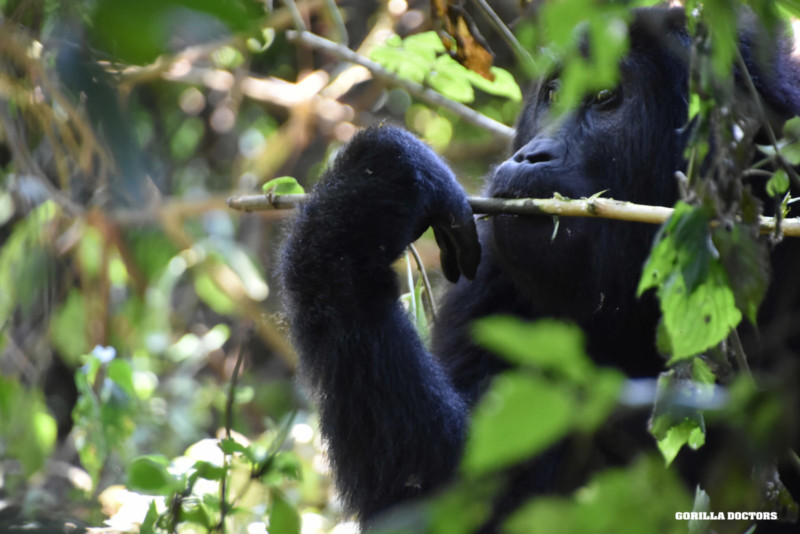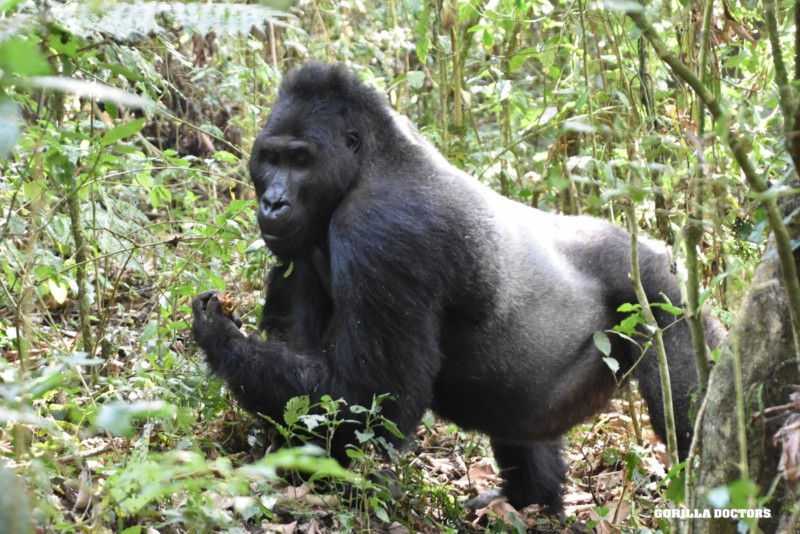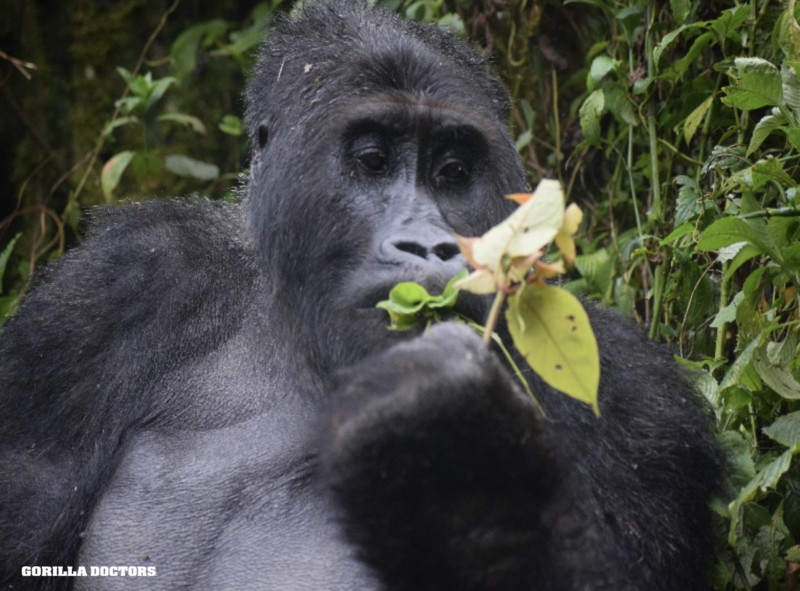The Greatest (in size) of the Great Apes
By Gorilla Doctors Staff on Tuesday, October 27th, 2020 in Blog.Grauer’s gorillas are not only the largest sub-species of gorilla, they are the largest primate on the planet. A silverback can reach up to 250kg (~550lbs) and stand over 2m (~6.5ft). Grauer’s, also called eastern lowland gorillas, are found only in eastern DR Congo.
Grauer’s gorillas are classified as critically endangered by the International Union for the Conservation of Nature (IUCN), and the sub-species has experienced population declines of at least 77% over the last 20 years with current population numbers estimated at 3,800 individuals remaining1.

A sub-adult Grauer’s gorilla in Chimanuka group, Kahuzi Biega National Park, DRC, July 2020. © Gorilla Doctors
More Mobile Phones than Humans: A Direct Threat to Grauer’s Gorillas
Grauer’s gorillas (and their close cousins, the mountain gorilla) face significant threats to their long-term survival including bushmeat hunting and habitat loss for subsistence agriculture, logging and mining, all of which can be attributed to human population growth and increasing demand for resources. DR Congo has some of the richest natural resources in the world, which has also contributed to long-term armed conflict destabilizing the region.
While this may seem like a distant problem, some of the ‘conflict minerals’ in high demand are gold, tin, tungsten, coltan, and tantalum, key minerals used in the manufacturing of mobile phones and tablets.
Did you Know – Since 2014 there have been more mobile phones on the planet than human beings2?
In an effort to reduce extractive pressure for virgin minerals, many zoos around the world, such as the Houston and Columbus Zoos in the U.S., and Zoos Victoria in Australia have implemented mobile phone recycling initiatives. To date, Zoos Victoria has recycled over 170,000 devices and uses some of the funds raised to support Gorilla Doctors field activities.
Graueri Conservation Action Plan
In 2006, Gorilla Doctors added Grauer’s gorillas to our patient population and we currently monitor the health of habituated groups (41 individuals) in Kahuzi Biega National Park and expanded to the Mt. Tshiabirimu region in 2008. With funding from National Geographic and a private donor, we have also developed non-invasive health monitoring techniques to watch over unhabituated Grauer’s gorillas, which comprise the majority of the population. Recently, Drs. Eddy and Fabrice, our veterinary team in DR Congo, conducted health checks of Bonane group and lone silverback Mugaruka in Kahuzi Biega National Park, and all individuals were observed in good health, including the infant twins in Bonane group!
In 2012, IUCN and the Jane Goodall Institute published the 2012-2020 Conservation Action Plan (CAP) for Grauer’s gorillas and chimpanzees in the Kahuzi Biega, Maiko, Tayna and Itombwe landscapes for eastern Democratic Republic of Congo. Since 2013 Gorilla Doctors has taken the lead in implementing a number of health-related priority actions identified in the CAP for habituated Grauer’s gorillas living in Kahuzi Biega National Park.
Gorilla Doctors also helps provide emergency and routine veterinary support to the GRACE Center the only sanctuary in the world for orphaned Grauer’s gorillas. GRACE is located next to the Tayna Reserve in DRC and currently cares for 14 rescued Grauer’s gorillas, many of whom were in Gorilla Doctors care when they were first confiscated as infants. GRACE’s ultimate goal is to reintroduce these rehabilitated individuals back into the wild. GRACE also works closely with local communities to promote gorilla conservation and education.
How you Can Help Grauer’s Gorillas
If you are based in the U.S. and want to find a local resource for recycling or donating your unwanted mobile devices, google “recycle mobile phones near me”. Many local waste management companies also offer regular electronic recycling programs.
There are also companies that will buy your unwanted devices and you can learn more here.
In 2017, the Enough Project published a report ranking the 20 largest consumer electronics and jewelry retail companies on their efforts to develop conflict-free minerals supply chains. Read a summary of the report here and get the latest updates on Enough’s #DemandtheSupply campaign.
Download the full IUCN Conservation Action Plan here.
Watch Dr. Eddy rescue a wild Grauer’s blackback (from March 2020)
Read more about Grauer’s gorillas at these sites:
GRACE Center (their live-stream cam of the gorillas is especially delightful)
Support Gorilla Doctors’ work to keep Grauer’s and mountain gorillas healthy!
References
1Plumptre, Andrew J., et al. PloS one 11.10 (2016): e0162697
2 https://www.ibtimes.co.uk/there-are-more-gadgets-there-are-people-world-1468947


 Donate
Donate


